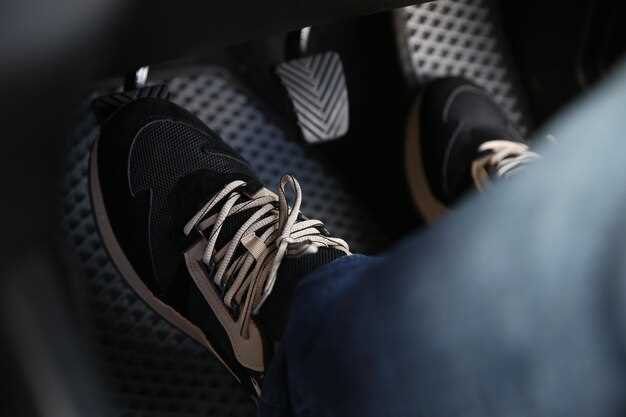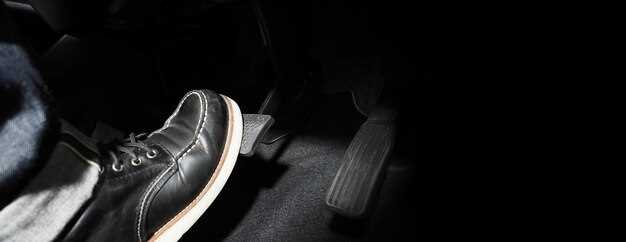
When it comes to enhancing your performance on the track, selecting the right racing shoes is crucial for achieving optimal pedal response. The connection between your feet and the pedals can greatly influence your handling, speed, and overall driving experience. Understanding the key features of racing shoes will help racers not only to improve their grip but also to maximize their control and responsiveness.
Pedal feel is an essential aspect of racing. It refers to how well the driver can sense and react to the nuances of the vehicle’s controls. The right pair of shoes can significantly enhance this feel, allowing for more precise footwork. Materials, sole rigidity, and fit are some of the pivotal factors that can impact how effectively you can engage with the pedals during a race.
In this article, we will delve into the critical aspects to consider when choosing racing shoes. From the importance of a snug fit to the advantages of specialized sole designs, we’ll explore how to select shoes that not only meet your comfort needs but also enhance your performance on the racetrack. Proper footwear can mean the difference between victory and defeat, making this decision essential for any serious racer.
Factors Influencing Pedal Control in Racing Shoes

The design and construction of racing shoes significantly affect how well a driver can control the pedals. One of the primary factors is the shoe’s sole rigidity. A stiffer sole provides better energy transfer from the foot to the pedal, allowing for quicker and more precise movements. Conversely, a too-flexible sole may lead to a lack of control and delayed responses during critical moments of racing.
Another important factor is the shoe’s fit. A snug fit ensures that the foot does not move around inside the shoe, which is crucial for maintaining consistent pedal feel. Poorly fitting shoes can lead to slippage, reducing the driver’s ability to apply the necessary force accurately to the pedals.
The material used in the construction of racing shoes also plays a significant role. Lightweight materials improve responsiveness, while high-friction outsoles enhance grip on the pedals, preventing foot slippage. Breathability is another consideration; while racing shoes should prioritize performance, comfort during long races cannot be overlooked.
Additionally, the height and angle of the shoe’s toe can affect how a driver engages with the pedals. A lowered toe can facilitate smoother transitions between braking and acceleration, while an appropriate angle allows for efficient heel-and-toe techniques. Each of these design elements contributes to overall pedal control during racing.
Lastly, the type of closure system–whether laces, Velcro, or zippers–can impact how securely the shoe fits. A secure fit enhances the driver’s confidence and control over the pedals, allowing for more aggressive driving styles without fear of losing connection with the controls.
Materials and Design Features for Enhanced Response
When it comes to choosing racing shoes, the materials and design features play a crucial role in achieving optimal pedal response. The right combination not only enhances control but also maximizes the efficiency of power transfer during racing. Advanced materials like carbon fiber and lightweight synthetics are commonly utilized to minimize weight while maintaining structural integrity. These materials allow for a rigid sole construction that reduces energy loss, enabling drivers to feel every nuance of pedal input.
The shoe’s upper construction is equally important, where breathable and flexible materials offer comfort without compromising on support. A snug fit ensures that the foot remains securely in place, allowing for precise movements and control over the pedals. Features like reinforced toe caps and heel counters provide additional stability, which is essential for effective acceleration and braking.
Additionally, the sole design often incorporates unique patterns or grooves that enhance grip on the pedals. This is vital for effective control, particularly in high-speed situations where rapid responses are necessary. The incorporation of different rubber compounds can also improve traction and feel, making it easier for drivers to modulate their inputs smoothly.
Ultimately, the choice of materials and the specific design features of racing shoes should work harmoniously to deliver an unmatched level of feedback and control. This careful consideration ensures that drivers can maintain their focus on performance while enjoying the benefits of responsive equipment.
How to Test Racing Shoes for Compatibility with Your Pedal System

Testing racing shoes for compatibility with your pedal system is crucial for achieving optimal control and performance on the track. Begin by ensuring the shoes you choose are specifically designed for racing and compatible with the pedal mechanism in your vehicle.
Start by examining the sole of the racing shoes. The material and rigidity of the sole play a significant role in how power is transferred from your foot to the pedals. A stiffer sole typically offers better feedback and responsiveness, allowing for precise control during acceleration and braking.
Next, check the shoe’s connection points. If you are using clipless pedals, ensure that the shoe has the correct mounting system corresponding to your pedal type. Install the pedal cleats securely on the shoes, following manufacturer guidelines to maintain a reliable attachment during driving.
Once the cleats are attached, perform a control test. Put on the shoes and step onto the pedals while your vehicle is stationary. Assess how easily your foot engages and disengages from the pedal. There should be no excessive force required to click into place, and you should be able to release your foot with minimal effort.
After confirming the grip, go for a brief test drive. Pay attention to how the shoes feel while operating the pedals in various conditions–accelerating, braking, and cornering. The shoes should provide a comfortable fit, avoiding any slipping or excessive movement that could hinder your control.
Additionally, monitor the feedback you receive through the sole. Effective racing shoes should relay immediate sensations from the pedal to your foot, enabling you to adjust your inputs dynamically based on the car’s behavior.
Finally, assess long-term comfort. After driving for a reasonable duration, evaluate whether the shoes create any pressure points or discomfort that might affect your performance. An ideal racing shoe will combine support and communication with the pedals while maintaining comfort during extended use.











